The complex includes:
1. Wide Range Aerosol Spectrometer EDM 665 This system determines the size distribution of aerosols ranging from 5 nm to 30.000 nm in over 70 different size channels. It is a stand alone system with automatic sample air dehumidification and condensate removal system in the CPC. While maintained under constant condition by an integrated air-conditioning, it can operate 1 month unattended. Optional meteorological sensors as well as GPS and wireless data transfer are available.
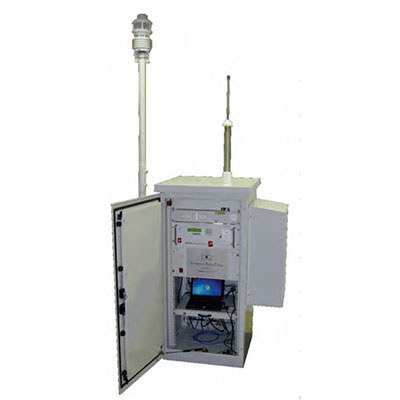
Main specifications EDM 665:
- Measurement Range
- - 71 size channels
- from 5.0 nm up to 32 µm.
- - minimum scan time of 300 sec.
- - 73 size channels
- - concentration range from 1 to 10 P/cm
- Optical Spectrometer
- - size range: 250 nm to 32 µm
- 31 size channels
- - concentration – 1 to 2.000 P/cm³
- - sample flow – 1.2 l/min
- - reproducibility – 3% in max. range
- SMPS+C
- - size range – 5.0 nm to 350 nm
- 45 size channels
- 73 size channels
- - concentration – up to 10 P/cm
- - sample flow – 0.3 l/min
- - butanol supply: External tank for long-term
- measurements
- - condensate
- removal: continuous, by micro-pump
- Communication Ports
- - integrated Microcomputer for data
- acquisition
- - integrated GRIMM data logger 1142.M5
- - 2 x RS-232 with 9-pin D connector
- - 2 x PCMCIA-slots for memory card use
- - digital inputs for meteorological or gas
- sensors
- Operating Conditions
- - ambient temp. – -20°C up to +55°C
- - power supply – 110/220 VAC, 50/60 Hz
- - power consumption – 750 W
- Dimensions & Weight incl. A/C
- - size – 80 x 80 x 160 cm
- - weight – 250 kg
- - sample pipe – 1.0 m
2. Cloud Condensation Nuclei Counter CCN-100
Clouds are a key factor in moderating climate change. Cloud condensation nuclei (CCN) are those aerosol particles that can form into cloud droplets, and an understanding of CCN concentrations in space and time is necessary if models are to accurately predict the magnitude of global climate change. The DMT CCN counter measures the concentration of these particles and can be operated on the ground or on aircraft.
The DMT CCN counter is being used in laboratories to measure how different materials form cloud droplets, in urban environments to study how pollution affects cloud and precipitation formation, and in weather modification studies to determine when and where to seed clouds. This popular instrument comes equipped with single (CCN-100) or dual (CCN-200) columns for extended versatility.

Specifications
Technique: activation of CCN particles at constant supersaturation maintained in a 50-cm-high column with continuously wetted walls and a longitudinal thermal gradient; sizing of the activated droplets using an optical particle counter.
Aerosol medium: Air, 5-40°C (41-104°F).
Number concentration range: Depends on supersaturation:
- 6.000 particles/sec at supersaturations below 0.2%;
- 20.000 particles/sec at supersaturations above 0.3% .
Measured particle size range (from OPC, after supersaturation) – 0.75-10 µm.
Number of particle size bins – 20.
Sampling frequency – 1 Hz / 1 sec.
Supersaturation range – 0.07-2.0%.
Time required for supersaturation change – ~30 sec. for 0.2% change.
Maximum number of automatically scanned supersaturation settings – 250.
Optical particle counter laser – 660 nm, 35 mW.
Flow Range:
- total flow: 200-1000 vol. cc/min (factory calibrated at 500 Vccm);
- sample flow: 20-100 Vccm;
- sheath flow: 180-900 Vccm.
Flow Control:
- total flow is adjustable from within CCN Counter software;
- sample / sheath flow ratio is adjustable using manual metering valve.
Pump: solenoid pumps for water; diaphragm pump for air.
Routine maintenance: every four days / before every flight:
- empty and refill water bottles;
- check OPC water trap and bottom of case for water leakage.
Monthly:
- check air inlet filters;
- check flow calibration;
- check desiccant tube.
Every three months:
- replace airflow filter.
Calibration DMT recommends periodically calibrating the CCN Counter supersaturation rate, flow sensors, pressure transducers, and the optical particle counter. The user can calibrate the supersaturation rate themselves by comparing the instrument’s output to that of reference instruments Differential Mobility Analyzer (DMA) and a CN Counter. A complete cleaning and calibration is also available from DMT.
Once the calibration analysis is complete, the user can easily adjust the instrument by entering new values into the CCN software.
Weight – CCN-100:
- for lab use (with frame) – 35.2 kg / 77.5 lb;
- for aircraft use (without frame) – 29.0 kg / 64.0 lb;
Environmental Operating Conditions:
- temperature – 5-40°C (41-104°F).
RH: 0-100% RH non-condensing.
3. The Integrating Nephelometer 3563.
The Integrating Nephelometer 3563 is a unique analytical instrument useful for short-or long-term measurements of the light-scattering coefficient of atmospheric and laboratory aerosols. It is particularly well-suited for measurements related to climate, visibility, and air quality. This unique instrument offers sensitivity to light scattering coefficients lower than 1.0 x 10 7 meter -1 (blue and green wavelengths, 30-sec average time). That's as much as two orders of magnitude better than other commercial instruments!
TSI's Integrating Nephelometer 3563 has the advantage of selectable averaging time, allowing data to be tailored to different test requirements. It includes temperature and humidity sensors, and it possesses high vacuum integrity. Therefore, it produces accurate measurements, even when positioned inside pressurized aircraft cabins or smoke-filled environments. This three-color nephelometer allows you to measure both total and backscatter signals, and it operates under complete computer control. Software and a separate power supply (not pictured) are also included with the instrument.
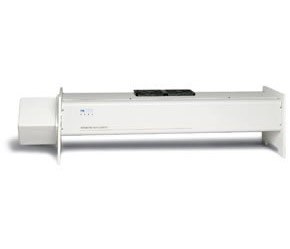
SENSOR ASSEMBLY
- Wavelengths – 450 nm (blue), 550 nm (green), and 700 nm (red).
- Bandwidth – 40 nm (all wavelengths).
- Sensitivity at 60-sec. averaging time (aerosol scattering coefficient, SP):
- blue and green wavelengths – 1.0 × 10-7/m,
- red wavelength – 3.0 × 10-7/m.
- Upper Detection Limit:
- 2.0 × 10-2/m at 60-sec. averaging time.
- Averaging time:
- 1 to 4096 sec. (selectable).
- Drift:
- <2.0 × 10-7/m at 60-sec averaging time for up to one hour after filtered-air,
- reference measurement for green wavelength.
- Optical Background Signal:
- blue and green wavelengths – <5.0 × 10-5/m,
- red wavelength – <1.0 × 10-5/m.
- Angular Integration
- 7 to 170°
- Backscatter Shutter
- Changes angular integration to 90 to 170°
- Reference Chopper
- Allows measurement of light intensity of a reference object illuminated by
- main lamp or of photodetector’s dark signal
- Filtered Air Chopper
- High-efficiency particle filter switches into sample air stream automatically
- on computer demand or at intervals selected by user
- Response Time
- <10 sec
- Recommended Flow Rate
- 20 to 200 L/min
- Inlet/Outlet Dimensions
- 1-in. (25 mm) female NPT
- Particle Transport Efficiency
- >95% of unit-density particles from 0.05 to 5 μm in diameter
- Temperature/Pressure Sensors
- Built-in sensors allow corrections for changes in the Rayleigh-scattering
- coefficient of air within the sample volume
- Humidity Sensor
- Measures relative humidity of sample from 5 to 95% ±5%
4. MOUDI™ impactor M125R.
MOUDI-II™ are second generation MOUDI™ impactors. Both the MOUDI-II and the original MOUDI impactors are precision cascade impactors for high accuracy aerosol sampling in order to collect size-fractionated particle samples for gravimetric and/or chemical analysis. The primary difference between MOUDI and MOUDI-II impactors is the use of internal embedded stepper motors in the MOUDI-II to spread out the particle deposit to achieve a nearly uniform deposition on the collection substrate, while in the original MOUDI impactor external mechanical gear rotation is used to achieve the uniform particle deposition.

FEATURES
- Sampling flow rate:
– Models 125-R & 125-NR: 10 L/min
- Size intervals and stage cut-sizes
– four equal geometrical increments per decade of particle size
– Models 122-R & 122-NR: 0.01, 0.018, 0.032, 0.056, 0.1, 0.18, 0.32, 0.56, 1.0, 1.8, 3.2, 5.6, 10, and 18 μm
– Models 125-R & 125-NR: 0.01, 0.018, 0.032, 0.056, 0.1, 0.18, 0.32, 0.56, 1.0, 1.8, 3.2, 5.6 and 10 μm
- Easily removable collection substrates allow for quick turn-around time for productive use of the instrument.
- Models 120-R, 122-R, & 125-R:
– Volumetric flow control
– Programmable logic controller (PLC) controls instrument operation including start- and stop-times. Temperature and pressures are measured, recorded, and stored at pre-determined time intervals.
– Absolute pressures are monitored on the lower stages to provide indication for possible clogging of nozzles as small as 50 μm in diameter
- Sharp cut-off size characteristics
- Low inter-stage losses
• Up to 6000 micro-orifice nozzles to reduce jet velocity, pressure drop, particle bounce and re-entrainment.
5. Supermicrometer Monodisperse Aerosol Generator 3941 – TSI

Our Supermicrometer Monodisperse Aerosol Generator 3941 System lets you produce the most monodisperse particles possible in a laboratory. It generates supermicrometer particles (up to 200 µm in diameter) from nearly any material that can be put into solution with a volatile solvent.
Characteristics
- Mode of operation: uniform fluid flow through a vibrating hole.
- Particle size range: 1-20 microns.
- Initial droplet size: 20-400 microns.
- The geometric standard deviation: <1.01.
- The rate of generation of particles: 1000-300000 particles per second.
- Dimensions: 44x37x20 cm.
- Weight: (kg) 16.
6. The Real Smoke Generator MiniCAST 5201A
The Real Smoke Generator (RSG-miniCAST) is the newest innovation after CAST (Combustion Aerosol Standard), which was developed in 1999 and is well known as generator for standard soot particles.
RSG-miniCAST (EU andUS patents, JP and CN pat. pend.) produces real combustion soot particle by using either a diffusion flame or a premixed flame. The operation principle is based on solid know-how and practical experiences from more than 10 years leading aerosol research and development activities.
RSG-miniCAST is going to extend the application range of CAST. Its design and features meet the requirements of different applications in laboratories or for mobile needs.
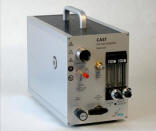
Remarkable features
Good stability, adjustable particle size, internal ignition, flame failure device, both internal and external flow control possible, flame inspection, easy handling and portable.
Applications
- Aerosol research;
- Medical research;
- Calibration and test of particle measuring instruments;
- Development and test of smoke alarm;
- Test of filter material and devices, e.g. soot traps.
Characteristics
- Real combustion aerosol;
- Particle size adjustable between 10 and >200 nm;
- Particle concentration and mass flow adjustable or in combination with aerosol dilutor;
- Good stability and repeatability.
7. Polar nephelometer Aurora 5000
The Aurora will measure, continuously and in real-time, light scattering in a sample of ambient air due to the presence of particulate matter (Specifically, the scattering coefficient σsp) at three wavelengths as a function of relative humidity.
Range
- Measurement: 0 to 20000 Mm-1.
- Light scattering angle: 9-170°.
- Backscatter angle: 90-170°.
- Wavelength: 450 nm, 525 nm, 635 nm simultaneously.
- Lower detectable limit: < 0.3 Mm-1 over 60 seconds integration.
- Sample flow rate: 5 l/min.
- Case Size: 170 x 700 x 215 mm (L x W x H).
- Weight: 11.8 kg.
8. Centrifugal Particle Mass Analyzer CPMA-EU
The Cambustion Centrifugal Particle Mass Analyzer (CPMA, Olfert and Collings, 2005) is an aerosol classifier which selects particles according to their mass : charge ratio. It produces a monodisperse aerosol based on a mass metric, compared with a DMA which uses an electrical mobility metric.
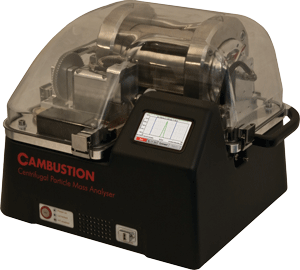
Mass range: 0.2 ag* – 1,050 fg (depending on sample flow and desired resolution).
Equivalent diameter range at unit density: 7 nm* – 1.3 μm (depending on sample flow and desired resolution).
Rotational speed: 500 – 12,000 rpm.
Voltage range: 0.1 – 1,000V (auto-switching dual range:
- ~10 V,
- ~10 – 1,000 V).
Classifier dimensions: 200 mm × 120 mm (1 mm gap) optional traceable gauging certificate available.
Sample flow: recommended 1.5 lpm (down to ~0.3 lpm with increased diffusion loss, up to ~8 lpm with decreased resolution).
9. UV-Vis & UV-Vis-NIR SystemsCary-100
The Cary 100 is a cost-effective UV-visible spectrophotometer with a versatile set of accessories for routine laboratory work. It is controlled by the Cary WinUV software, a Windows-based software featuring an easy-to-use modular design. The instrument is shipped with liquid sample holders and can be fitted with a wide range of accessories to provide extra capabilities. The instrument is popular in university teaching laboratories.
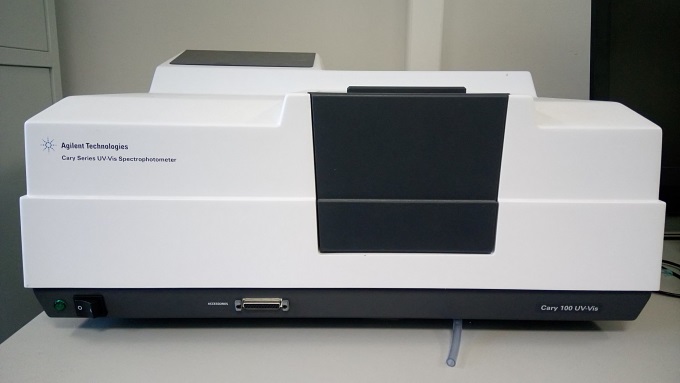
Specifications
- Optical range: 190-1100 nm.
- The spectral resolution: of <0.24 nm.
- The slit width programmable: 0.2 nm to 0.4 nm increments 0.1 nm.
- Diffraction gratings: 30-35 mm, 1200 lines / mm, the angle of the light at 240 nm 8.6º.
- Optics: classical double-beam scheme based on highly reflective optical component with a dielectric coating quartz stabilized optical flows with the ability to register their relationship and one or two independent rays.
- Monochromator: Czerny-Turner's high, 0.278 m.
- Light source: visible range - halogen lamp (tungsten) with a quartz window; UV - deuterium lamp.
- Detector: high sensitivity photomultiplier R928.
- Scan speed: 3.000 nm / min.
- Photometric range: +/- 3.7 Abs.
- The magnitude of the scattering of light (220 nm): <0.02%.
- Photometric noise (at 0 Abs): <0.000085 Abs.
- Kinetic data collection rate: 30 points / sec (1800 pixels / hour), the ability to change the speed of data collection in time. The maximum number of cycles – 999, maximum cycle time – 9 999 m.
- Step data collection: 0.02 nm to 1.67 nm.
- Integration time: 0.033 to 999.
- Cell section oversized: 139 650 320 mm.
- Sizes: 64 x 65 x 32 cm (w x d).
- Weight 45 kg.
10. Scanning Mobility Particle Sizer™ Spectrometer (SMPS) TSI’s SMPS™ spectrometer is widely used as the standard for measuring airborne particle size distributions. This system is also routinely used to make accurate nanoparticle size measurements of particles suspended in liquids. The National Institute of Standards and Technology (NIST) uses a TSI DMA to size 60 nm and 100 nm standard size reference materials. SMPS™ spectrometer sizing is a discreet technique in which number concentrations are measured directly without assuming the shape of the particle size distribution. The method is independent of the refractive index of the particle or fluid, and has a high degree of absolute sizing accuracy and measurement repeatability.

Applications
- Nanotechnology research and materials synthesis.
- Atmospheric studies and environmental monitoring.
- Combustion and engine exhaust studies.
- Indoor air quality measurements.
- Nucleation/condensation studies.
- Inhalation toxicology studies.
Specifications and Features
- Data averaging (scans on metering): from 1 to 999, the user selects.
- The range of particle sizes: 1 nm to 5 microns.
- Concentration: 1 to 107 particles/cm3.
- Measuring time: 16 s to 600 s.
- Aerosol flow: 0.2 to 2 l/min, user configurable.
- Purge flow rate: 2 to 20 l/min, user configurable.
- Operating: liquid distilled water.
- Operating Temperature: 10 to 35°C.
- Storage temperature: 0 to 40°C.
- Aerosol inlet temperature: 5 to 35°C.
- Humidity: 0 to 90%, non-condensing.
- Pressure: 75 to 105 kPa.
Dimensions and weight
- Size: 64 x 41 x 46 cm;
• Weight: 23.2 kg.
11. ELECTROSPRAY AEROSOL GENERATOR TSI3480 The Electrospray Aerosol Generator Model 3480 (EAG) produces high concentrations of monodisperse, submicrometer particles from 2 to 100 nm (initial droplet diameter of 150 nm, nominal). The Electrospray pushes a charged liquid solution or suspension through a capillary tube and exerts an electrical field on the liquid at the capillary tip. The electrical field pulls the liquid from the capillary, forming individual droplets. Air and CO2 mixed with the droplets evaporate the liquid and the remaining particles are neutralized by an ionizer.

Settings and requirments
- Particle generation rate – >107 particles/cm3.
- Liquid conductivity – 0.2 S/m nominal.
- Liquid flow rate – 50 to 100 nL/min.
- Particle size range – <3 to >100 nm.
- Initial droplet diameter – 150 nm.
- Differential pressure – 0 to 5 psi (3.0 psi nominal).
- Air flow – 0.2 to 2.5 L/min (1 L/min nominal).
- CO2 flow – 0.05 to 0.5 L/min (0.1 L/min nominal).
Power specifications
- Charger – Po-210, 5 millicurie.
- Voltage range – +0.5 to +3.5 kV (2 kV nominal, negative high-voltage module available).
- Current range – 0 to 2000 nA (180 to 320 nA nominal).
- Power requirements – 85 to 264 VAC, 50 to 60 Hz, 25 W maximum.
Product Specifications
- Dimensions – 20.3 x 40.4 x 25.7 cm (8.0 x 15.9 x 10.1 in.).
- Weight – 6.8 kg (15 lb).
12. SCANNING MOBILITY PARTICLE SIZER SPECTROMETER 3936NL88-N
TSI's Scanning Mobility Particle Sizer Spectrometer 3936 spectrometer is a high resolution nanoparticle sizer that has long been hailed as the researcher's choice for nanoparticle size characterization for nano applications including nano research and development.
TSI’s SMPS™ Spectrometer is widely used as the standard method to measure airborne particle size distributions. These particle sizers are also routinely used to make accurate nanoparticle size measurements of particles suspended in liquids. The National Institute of Standards and Technology (NIST) uses a TSI DMA to size 60 nm and 100 nm standard reference materials suspended in liquid (polystyrene latex spheres or PSL.
SMPS™ spectrometer sizing is a discreet technique in which number concentrations are measured directly without assuming the shape of the particle size distribution. The method is independent of the refractive index of the particle or fluid, and has a high degree of absolute sizing accuracy and measurement repeatability.

FEATURES AND BENEFITS:
- High resolution data – up to 167 channels.
- Broad size range – from 2.5 nm to 1.000 nm.
- Fast measurements – complete size distributions in 16 sec.
- Wide concentration range from 1 to 107 particles/cm3.
- Flexible set-up options, choice of water or butanol CPC fluid, choice of traditional or non-radioactive neutralizer.
- Computer automated flow control.
- ISO 15900:2009 compliant particle sizing method.
- Easy to set-up and operate.
Discreet particle measurement: works well for multi-mode samples independent of optical properties of the particles.
13. The Lab OC-EC Aerosol Analyzer
The Lab OC-EC Aerosol Analyzer is the industry standard for environmental and workplace monitoring. This instrument uses a proven thermal-optical method to analyze for OC-EC aerosols collected on quartz filters.
It is the basis for NIOSH Method 5040 and is fully compliant with the IMPROVE protocol. It features a new and improved microcontroller and data acquisition system for enhanced accuracy and precision. There is no comparable instrument on the market today.
In the Lab OC-EC Aerosol Analyzer, samples are thermally desorbed from the filter medium under an inert helium atmosphere followed by an oxidizing atmosphere using carefully controlled heating ramps. A flame ionization detector (FID) is used to monitor the analysis. Our proven low dead volume carrier gas control system and proprietary quartz oven design provide high sensitivity with ultra-low carbon background and no oxygen contamination.
Features:
- OC-EC measurements for integrated filters and bulk samples.
- Analysis profiles easily selectable to match NIOSH, IMPROVE A, EUSAAR2, STN or custom applications.
- Excellent sensitivity with low instrument background.
- FID detection with linearity over 4 orders of magnitude.
- New and improved microcontroller and data acquisition system for enhanced accuracy and precision.
- Standard transmittance-based pyrolysis correction, resulting in better signal-to-noise and throughput.
- Concurrent transmittance/reflectance option with superior temperature controlled laser system.
- New extended-life heating coils, with PID control algorithm for stable oven temperatures during analysis.
Quality service and technical support by highly qualified personnel.
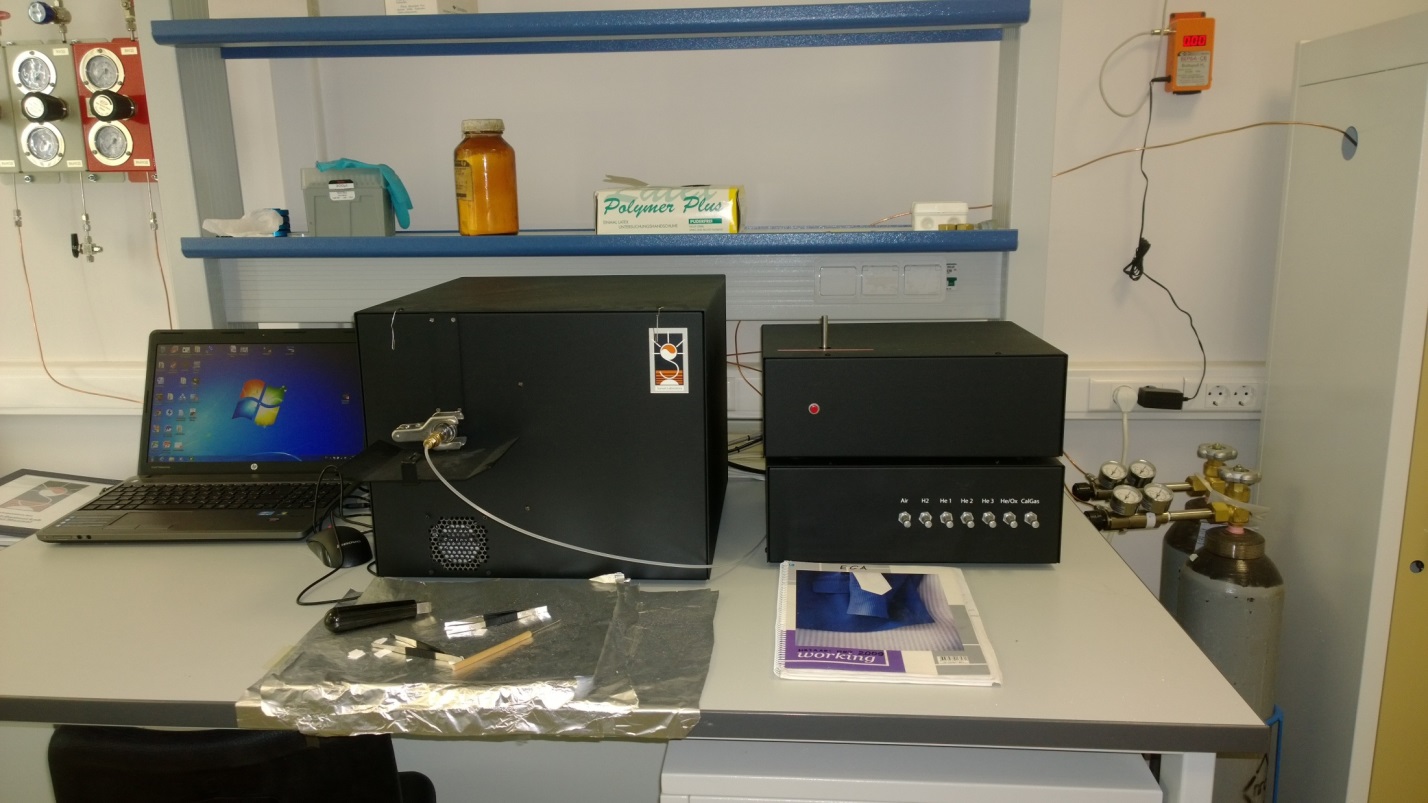
14. The Olympus BX53
The OlympusBX53 defines a revolutionary new standard in laboratory and clinical microscopy. Ergonomic design can provide enhanced operator comfort during long hours of use, with an intuitive control layout for fast, efficient observation and imaging.
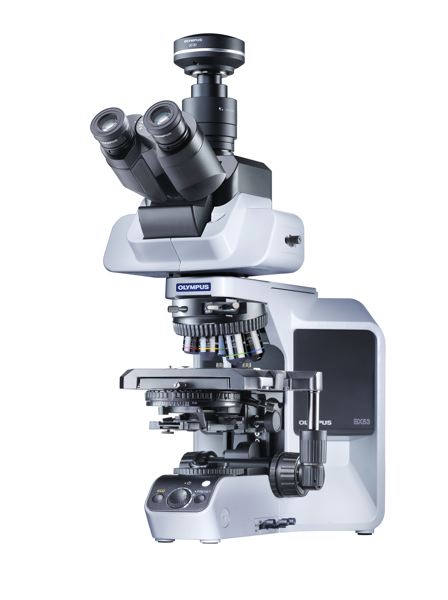
BX53 specifications
Microscope frame:
- optical system – UIS2 optical system.
- focus: Vertical stage movement: 25 mm stage stroke with coarse adjustment limit stopper, torque adjustment for coarse adjustment knobs, stage mounting position variable, high sensitivity fine focusing knob (minimum adjustment gradations: 1µm);
- illuminator: built-in Koehler illumination for transmitted light, light preset switch, light intensity LED indicator, built-in filters (LBD-IF, ND6, ND25), 12V 100W halogen bulb (pre-centered).
Revolving nosepiece Interchangeable reversed quintuple/coded quintuple/sextuple/septuple/coded sextuple/coded septuple nosepiece
Observation tube Widefield (FN 22):
- widefield tilting, telescopic and lifting binocular, widefield tilting trinocular, widefield trinocular, widefield erect image trinocular widefield tilting binocular, widefield tilting, telescopic, lifting binocular tube, widefield ergo binocular, widefield binocular;
- super widefield (FN 26.5), super widefield trinocular, super widefield erect image tilting trinocular.
Fluorescence light source:
- 130 W Hg light guide illumination;
- 100 W Hg apo lamp housing and transformer;
- 100 W Hg lamp housing and transformer.
• 75W Xe lamp housing and transformer.
15. Low Voltage Electron Microscope LVEM5
The LVEM5 is the first Low Voltage Electron Microscope, built on a revolutionary technology platform that combines advanced multi-mode imaging with unparalleled benchtop convenience.
The LVEM5 is the only low voltage (5kV) Transmission electron microscope. This is well below typical accelerating voltage of traditional EM (80-200kV), resulting in increased electron scattering which in turn leads to greater contrast in the TEM image.
Benefits of improved contrast:
- improved contrast – lower threshold for density differences;
- visualize samples that cannot be resolved by high kV methods without the use of heavy metal stains.
Avoid artifacts: non-existing structures brought about by stains.

16. Automated-S Microbalance Mettler Toledo XP6
The XP6 Automated-S microbalance accelerates weighing process. The new automated operating mode increases productivity and enables the seamless and easy integration into robotic systems. The small weighing chamber and the isolating stainless cover enable fast and stable weighing results while the freely accessible loading pan allows convenient handling of all short and longish-shaped samples.
The result:
- accelerated weighing process;
- easier and faster handling of samples;
- increased productivity.
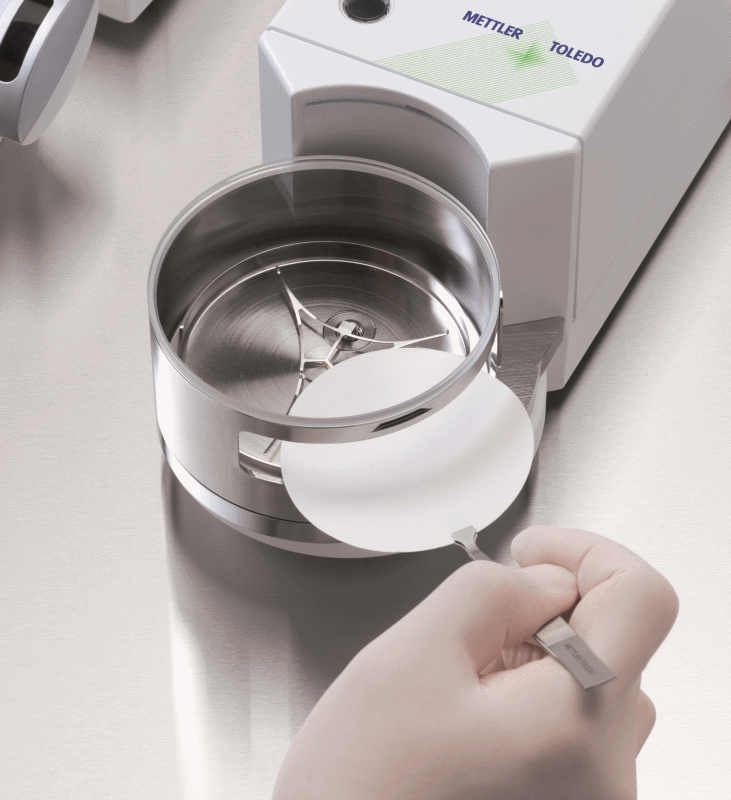
Specifications – XP6 Automated-S Microbalance:
- maximum capacity – 1 g;
- readability – 1 μg.